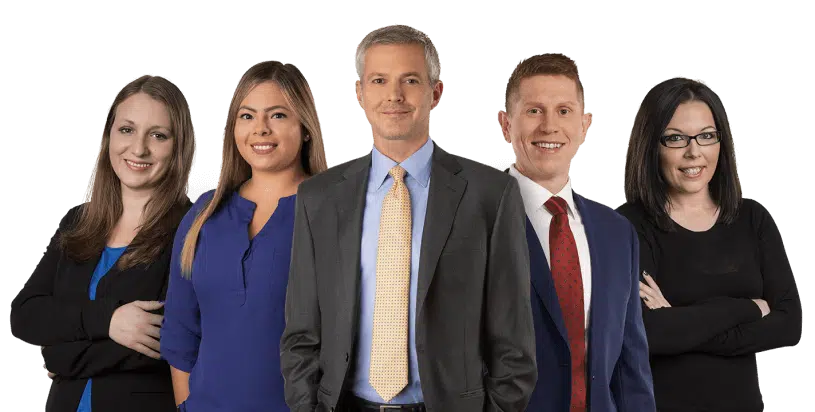Do little people get disability benefits? Unpacking which types of dwarfism qualify for Social Security Disability benefits
Dwarfism is a rare condition that affects a person’s height and body proportions. Also known as short stature, dwarfism affects thousands of people throughout the United States. While many with this condition are able to work and lead normal lives, some types of dwarfism pose significant medical challenges.
If you or a loved one have any form of dwarfism, you’ve likely wondered if there are disability benefits for dwarfism.
Fields Law is a Social Security Disability law firm, helping clients nationwide with disability claims, including those with conditions related to dwarfism.
Today, we’ll discuss dwarfism and Social Security Disability, breaking down the criteria used to determine eligibility for SSDI for individuals with dwarfism, along with everything else you need to know about disability benefits for dwarfism.
It costs nothing to get answers to your questions –
How is Dwarfism Defined?
Dwarfism is generally described as a genetic or medical condition that causes an individual to grow to an adult height of 4’10” or less. Individuals with dwarfism are often referred to as little people, or persons with short stature.
While there are many types of dwarfism, they are typically divided into two broad categories:
- Proportionate – People of short stature with body parts, such as arms, legs, and head, which are of the same proportions as average sized individuals. These individuals may simply appear to be shorter than average, but they may still suffer from medical conditions that affect their health such as bone and joint problems, hearing loss and developmental delays in children.
- Disproportionate – People of short stature whose limbs are shorter than average sized persons, and whose heads may be larger or smaller proportionally than average. They may suffer from reduced mobility and other physical ailments.
There are several forms of disproportionate dwarfism, each with different underlying medical conditions. Some of the most common include:
Achondroplasia
The most commonly diagnosed form of dwarfism, Achondroplasia, is a type of skeletal dysplasia. Individuals with Achondroplasia have shorter arms and legs, and an average size trunk. They may suffer from conditions including abnormal curvature of the spine, bowed legs, difficulty breathing, and sleep apnea. Achondroplasia is caused by a mutation in the fibroblast growth factor receptor 3 gene (FGFR3), preventing bone growth.
Spondyloepiphyseal Dysplasia Congenita
This form of dwarfism is a type of short trunk dwarfism, where the individual has a short torso, arms, and legs, but their hands, feet, and head are of average size. These individuals may suffer from health problems including hearing and vision issues, degenerative knee and shoulder disease, spinal issues, neck pain, foot deformities, and more. This form of dwarfism is thought to be caused by mutations in the COL2A1 gene, responsible for making the crucial bone protein type II collagen.
Diastrophic Dysplasia
Diastrophic dysplasia causes individuals to have very short arms and legs, often with spinal issues like scoliosis or kyphosis. They may also suffer from neck issues, joint deformities, spina bifida occulta, and foot deformities. Diastrophic dysplasia is thought to be caused by mutations in the SLC26A2 gene, responsible for producing a protein essential for cartilage and bone development.
Do Little People Get Disability Benefits?
We often hear the question “can you get disability for being 4′ 9 or shorter?”. Unfortunately, short stature alone is not reason enough to receive Social Security Disability Income (SSDI) for individuals with dwarfism.
The Social Security Administration (SSA) has compiled an official list of impairments in a document called Disability Evaluation Under Social Security. Often referred to as the Blue Book, this document provides physicians and other health professionals with a list of impairments along with the requirements to qualify for each disability.
While there is no single listing for dwarfism and Social Security Disability within the Blue Book, that does not mean that there are no disability benefits for dwarfism.
The SSA is most likely to approve disability benefits for dwarfism when the individual’s condition is extremely limiting, preventing them from working or otherwise living a normal, functional life.
The SSA reviews each application it receives based on the details of that specific individual’s medical situation. In order to qualify for Social Security Disability for short stature, Social Security will first consider whether you meet the requirements of one of the disabilities described in the Blue Book.
Health Conditions That Meet Social Security Disability For Short Stature
So, how would a disability for short stature be assessed by Social Security under the Blue Book? Even though short stature is not discussed as a single, independent disabling condition in the Blue Book, Social Security regulations provide for the evaluation of short stature under the provisions of any other condition listed in the Blue Book, as long as the severity of short stature equals the severity of the condition described in the Blue Book. The conditions listed below are often associated with people with various forms of dwarfism and could potentially qualify individuals with dwarfism for SSDI:
- Extreme Vision Impairment and Blindness
- Hearing Loss and Deafness
- Respiratory and Lung Problems
- Spinal Stenosis
- Cervical Joint Issues/Neck Pain
- Abnormal Hip, Knee, or Shoulder Joints
It’s important to note that meeting the requirements of these or other issues will require not only evaluation from your own doctors, but from independent SSA doctors as well.
Other Ways Dwarfism Can Direct a Finding of Disability Under Social Security Disability Regulations
What happens if short stature does not equal the severity of any condition listed in the Blue Book? When short stature causes limitations that make it difficult to work, but aren’t necessarily as severe health-wise as the conditions listed in the Blue Book, you may still be able to qualify for some assistance. When this happens, Social Security will further assess the impact of your condition on your ability to perform work activity.
The SSA will assess, in light of your limitations, your capacity to engage in work activity, also known as your residual functional capacity (RFC). The RFC is a method of determining how much work you can do based on your limitations. The more limited you are, for example if you cannot stand for long periods, or cannot lift more than 10lbs, the more likely you are to be approved for a disability claim.
If SSA determines there are no jobs that you can reasonably perform based on your RFC, you may be found “disabled”.
Do I Need Legal Help For Dwarfism Disability Claims?
Whether you have already filed or plan to file a disability claim, working with a disability lawyer who has handled dwarfism claims can significantly improve your chances of approval.
Here are just a few reasons why obtaining legal help for dwarfism disability claims is a smart move:
Experienced Guidance
A disability attorney is familiar with the lengthy process and specific requirements for winning a Social Security Disability claim. They will guide you through each step of the way, giving you the most efficient approach to your disability claim.
Gathering Medical Evidence
A successful claim must be backed up with extensive documentation. This means medical records, test results, and doctor’s statements. A lawyer specializing in disability claims will help you gather all the necessary documents to present a strong case.
Complete Application
A complete and accurate social security application is essential to the process. Missing documentation or incomplete applications will cause delays in an already lengthy process.
Enhanced Communication with the SSA
Getting in touch with the SSA isn’t always easy. Your disability attorney will communicate with the administration on your behalf, which is beneficial when you have trouble with the application process.
Greater Likelihood of Approval
There is evidence to suggest that retaining a disability lawyer will increase your likelihood of approval, versus those that undertake the application process on their own.
Help in the Appeals Process
Social Security claims are denied more often than they are approved. Because the SSA receives so many requests, roughly only 30% of cases are approved initially. That means that even when your application is well prepared, you may eventually need to go through the appeals process. A disability lawyer can help you prepare additional documentation, and even represent you if your case goes before a judge.
Need Legal Help for Dwarfism Disability Claims? Contact Fields Law
Ultimately, applying for Social Security Disability benefits based on a diagnosis of dwarfism is a long and complicated process. With no single definition for dwarfism in the SSA’s Blue Book, simply being 4’9 or shorter won’t qualify you for disability. You’ll need to prove to the administration that there are significant underlying physical or medical complications stemming from dwarfism that make it difficult or even impossible to find regular work.
With such strict requirements where any advantage can make a difference, the guidance of a disability attorney provides a significant benefit that is well worth the investment.
If you are in need of legal help for your disability claim, contact Fields Law. We are a trusted nationwide Social Security Disability law firm, with representation in all 50 states.
Throughout our 20 years of experience, we’ve helped thousands of clients obtain the disability benefits they deserve. Let our team of disability lawyers help take the stress out of the Social Security application process, and give you the representation you need.
Don’t navigate this complex process alone. Contact Fields Law today for a free, no obligation consultation and learn how our experienced disability lawyers can help you fight for the benefits you deserve.
*DISCLAIMER*
This blog post provides general information regarding the taxability of disability income and should not be considered tax advice. Tax laws are subject to change, and individual financial situations can vary significantly. For personalized guidance on your specific tax obligations, it is essential to consult with a qualified tax professional or financial advisor.

